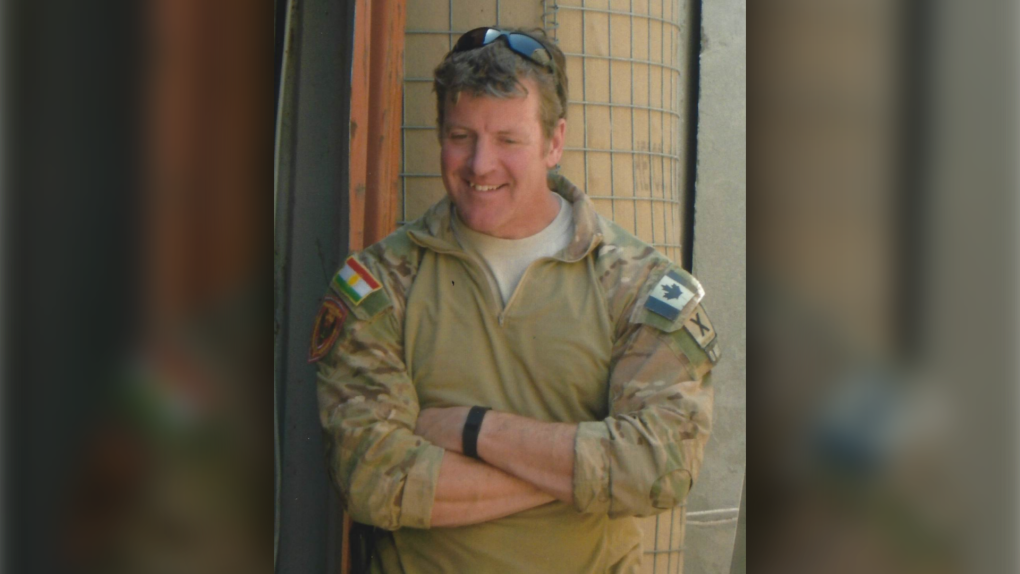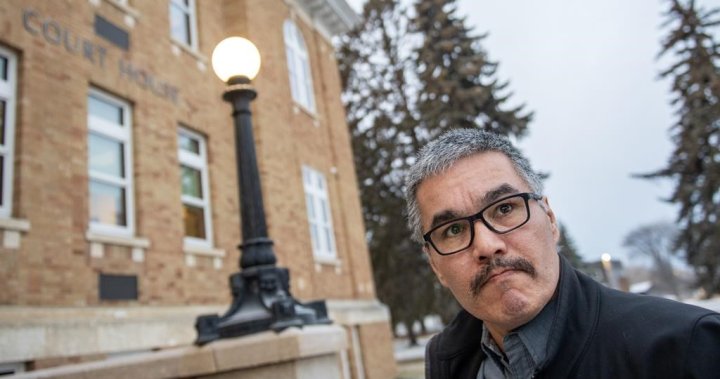Vee Duncan relapsed a few weeks ago.
They had managed to stay away from opioids for a year and a half, but the disease of addiction reset that calendar. They know it’s not a moral lapse or failure on their part — addiction is complex, and most people’s journeys don’t follow a straight line.
Duncan, a two-spirit Secwepemc outreach worker who runs a non-profit group called Nék̓em, has grappled with addiction since being prescribed Vicodin as a high school athlete.
“I really like how I felt from Vicodin, and it progressed into harder drugs and street drugs,” they say. “I was often on the streets up until five years ago.”
When Duncan relapsed most recently, they were glad to have access to pharmaceutical-grade opioids. They don’t want to use drugs and, after seeing many friends and acquaintances die recently, they know the risks posed by the adulterated drugs on the street.
Duncan worries what might happen if they relapse again and a safe supply is unavailable to them.
“The pharmaceutical route is safer because I know where it’s coming from,” says Duncan. “I know that it’s not put together in someone’s basement in the bathtub.”
Alberta and B.C. among worst death rates in Canada
Thousands of Canadians continue to die from drug poisoning each year, with more than 20 lives lost each day, on average.
Researchers and front-line workers prefer the term “drug poisoning” to “overdoses,” in part because of the nature of the crisis: with an unregulated and adulterated supply, people can’t know the true strength of the drugs they take, or what’s really in them.
“Our [opioid] prescribing levels are way down and yet our deaths are way up,” says Elaine Hyshka, an associate professor at the University of Alberta’s School of Public Health.
“That to me is very strongly indicative of how it’s really that the supply has changed, and not that all of a sudden we have way more people using drugs. It’s just that the supply is fundamentally more dangerous.”
In other words, it’s not an addiction crisis; it’s a toxic drug-supply crisis.
Alberta and British Columbia are the hardest-hit provinces in terms of accidental opioid deaths per capita. B.C.’s approach to the crisis includes some harm reduction and a decriminalization pilot, though many observers say neither goes far enough to have real impact.
Alberta, meanwhile, has taken one of the hardest tacks against what experts, frontline workers and drug users agree is the one strategy that is most likely to save the most lives: providing pharmaceutical-grade drugs to drug users, commonly known as safe supply.
“I really believe if we had access to safe supply and supervised consumption sites and drug-checking services on a broader, population-level scale, we could reduce deaths immediately in the short term,” says Rebecca Haines-Saah, an associate professor at the University of Calgary’s Cumming School of Medicine.
“People are dying because we’re fixated on recovery, we’re fixated on abstinence, and we’re fixated on things that work for some people in the long term. Those are things that address addiction. They don’t address the public health emergency.”
7,000 dead in Alberta since 2016
Harm reduction, as a concept, prioritizes the reduction of immediate harms above longer-term solutions. In the case of drug use, safe supply is advocated as a way to save lives immediately, including those who aren’t ready or able to stop using drugs today.
Despite Alberta’s soaring rate of deaths from opioids, the United Conservative Party government has steered policy away from harm reduction and toward a model of recovery and abstinence.
Alberta’s rate of drug poisoning deaths — 31.9 per 100,000 people as of November 2022, the most recent data available — remains well above pre-pandemic levels, with B.C. (40.2) the only province with a higher figure. Edmonton’s rate is higher still at 50.5.
In November, 120 people died in Alberta from unintentional opioid poisoning, 45 of them in Edmonton. None of the deaths were due to pharmaceutical opioids.
Nearly 7,000 people died of opioid poisoning in Alberta between 2016 and 2022, according to provincial health data.
Several high-profile UCP members have criticized harm reduction broadly and safe supply specifically, including former premier Jason Kenney, who said in 2020 that it wasn’t “terribly compassionate to facilitate addiction.”
Many say the driving force behind the so-called Alberta model of recovery is Marshall Smith, chief of staff to Premier Danielle Smith. A former drug user who points to his own journey of recovery as a model for others, he has said “a certain shroud of stigma needs to remain around addiction.”
Since forming government in 2019, the UCP has ended funding for Canada’s busiest safe consumption site in Lethbridge, and closed another in Edmonton, while paying millions of dollars to private companies to operate treatment centres for addiction.
People are dying because we’re fixated on recovery. – Rebecca Haines-Saah, University of Calgary
Despite the existence of similar digital tools, the province spent $325,000 to create an app called Digital Overdose Response System, or DORS, which is meant to automatically call for help if the user doesn’t respond after a set period of time while using drugs.
The province pays the developer $186,000 annually to support the app, but refuses to release data on its effectiveness.
The UCP government set up a committee of MLAs in 2022 to examine the question of safe supply and write a report. However, all NDP members quit the committee in protest against what they called the UCP’s slanted process, accusing the government of cherry-picking experts to arrive at its preferred conclusion.
The final report was widely criticized as flawed and biased, as was a 2021 report on safe consumption sites.
Support for harm reduction ‘does not dictate government policy’
But many Albertans may be out ahead of their government when it comes to safe supply.
A peer-reviewed paper in the Canadian Journal of Public Health found that, according to polling conducted by Leger in 2021, a majority of people in Alberta (63.5 per cent) and Saskatchewan (56.3 per cent) “supported safer supply programs that replace illegal street drugs with pharmaceutical alternatives for those unable to stop using.”
The paper’s authors, including Hyshka, found that “a lack of public support is not the main barrier to implementation.”
In an emailed statement to CBC News, a spokesperson for Alberta’s ministry of Mental Health and Addiction defended the government’s focus on recovery and dismissed public sentiment as irrelevant.
“Public opinion polling does not dictate government policy,” Colin Aitchison wrote.
“Narrow research initiatives on so-called ‘safe supply’ often fail to consider the broader societal context which includes issues related to diversion of high-potency opioid narcotics and lack of health supports for underlying addiction issues. Additionally, evidence indicates that a public supply of addictive drugs is not safe.”
Public opinion mattered a great deal, however, when the government was facing criticism over its review of safe consumption sites in 2021.
“We will not disregard the views of 19,000 Albertans” who gave feedback about those sites, a spokesperson said at the time.
Aitchison says Alberta currently has 1,370 beds and more than 29,000 treatment spaces, with an additional 450 beds and 1,600 spaces on the way.
But while this recovery-based approach often gets referred to as the “Alberta model,” British Columbia has long outpaced Alberta with 3,260 beds — yet its death rate is even higher, calling into question the effectiveness of the approach.
B.C. tries decriminalization
The country’s first decriminalization pilot recently went into effect in British Columbia.
Decriminalization, typically limited to specific circumstances, is the removal of criminal penalties without full legalization. In the case of B.C.’s approach, people in possession of specific drugs in small amounts will not face criminal sanctions, as long as the drugs are for personal consumption and not for sale.
The central distinction from legalization is that possession of the drugs remains illegal, but more akin to a speeding ticket in that it doesn’t result in a criminal record. However, many have criticized the maximum amount that a person may possess as impractically low.
Not only does criminalizing drug use not stop people from using drugs, advocates argue, but throwing someone struggling with addiction into the criminal justice system neither helps keep them safe, nor helps them find a path to stability.
“I do think it is really important to have decriminalization so that people who are using substances are not criminalized,” says Hyshka.
“Because we know that when you are at risk of criminalization, that fundamentally shapes your behaviour and informs how you engage in almost every facet of your life,” including risk-taking such as using drugs in isolation due to stigma.
But decriminalization won’t by itself end the drug poisoning crisis, say experts — not as long as the most readily-accessible supply of drugs remains opaque and unpredictable.
Haines-Saah points out that if a tainted supply of baby formula was killing infants, the government would take common-sense steps immediately.
“[But] because of a lack of political courage, we seem to be comfortable with letting people die.”
‘Without the safe supply, we’re just enabling drug dealers’
Vee Duncan wants to stop using opioids, and they’ve successfully stayed clean for long stretches. They have supports, including a safety plan with their therapist in case Duncan feels at risk of a relapse.
“If I know that someone overdosed on something, I know that they got something strong and I’m only going to need a little bit of it,” they say.
“The death rates have skyrocketed because as soon as someone finds out that someone’s overdosed, they’re like, ‘Hey, let’s go get what that guy got. Maybe, just maybe, it won’t kill us and we can get that ultimate high.'”
To Duncan, the reality on the ground is stark. Lives are being lost every day, and those lives could be saved very simply. The solution, they say, is no mystery.
“Without the safe supply, we’re just enabling drug dealers. If we just eliminate the drug dealers and give people what they need, we wouldn’t have as many deaths.”






More Stories
U.S. Supreme Court weighs extent of immunity for former presidents like Trump | CBC News
Former Saskatchewan Mountie who shot lover in park to be sentenced for manslaughter | Globalnews.ca
Search for Kelowna senior with dementia goes into the backcountry – Okanagan | Globalnews.ca